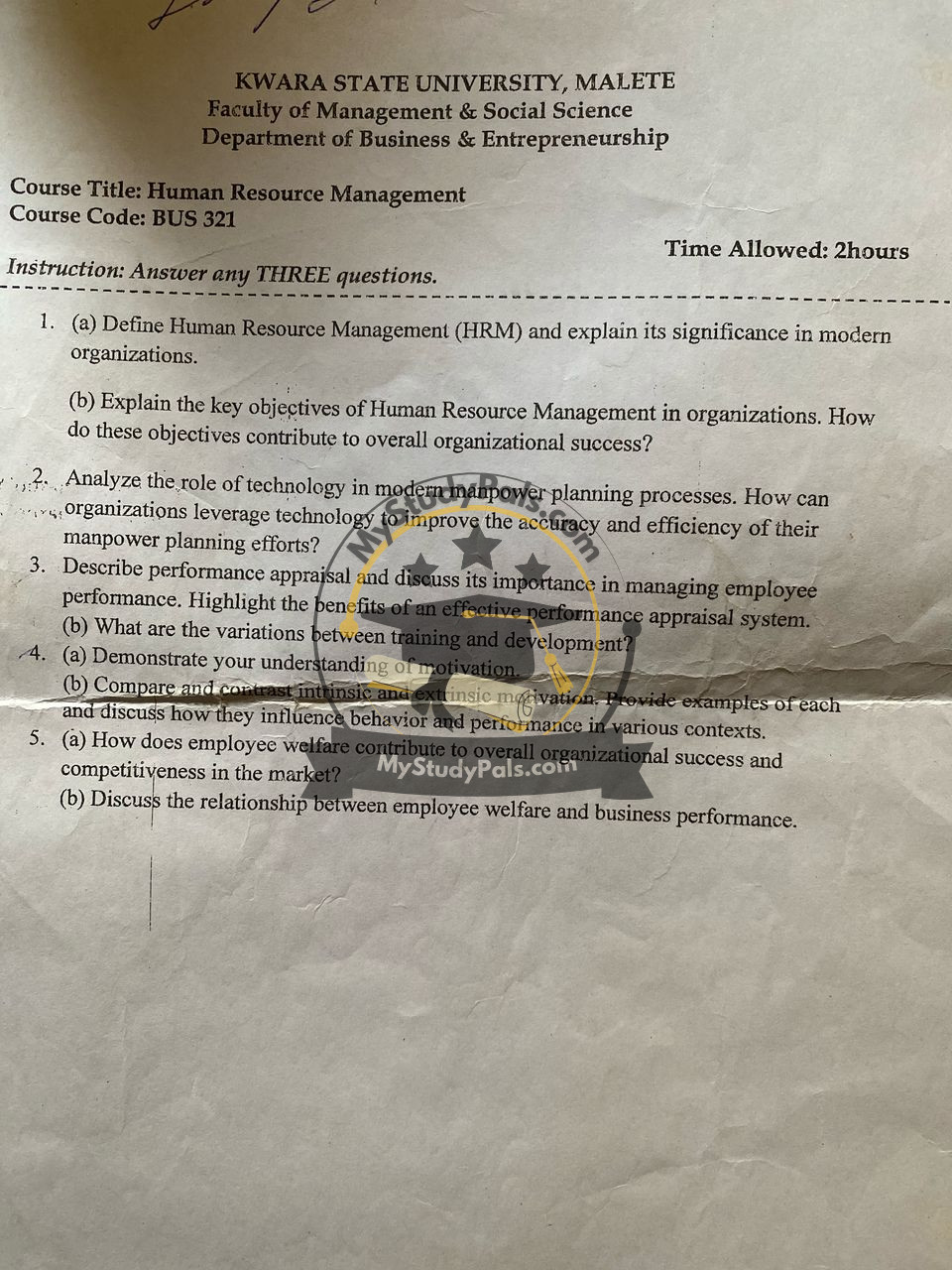ANWSER
—
Question 1:
(a) Human Resource Management (HRM) is the strategic approach to managing an organization’s workforce to maximize employee performance and achieve organizational goals. It involves functions such as recruitment, training, performance appraisal, compensation, and employee relations. HRM is significant in modern organizations because it ensures the right talent is hired, developed, and retained, fostering a productive work environment and aligning human capital with business objectives.
(b) The key objectives of HRM include:
– Recruitment and Selection: Hiring the right talent to meet organizational needs.
– Training and Development: Enhancing employee skills for improved performance.
– Performance Management: Evaluating and guiding employees to achieve goals.
– Employee Retention: Creating a positive work environment to reduce turnover.
– Compliance: Ensuring adherence to labor laws and regulations.
These objectives contribute to organizational success by optimizing workforce efficiency, fostering innovation, and maintaining a competitive edge in the market.
—
Question 2:
Technology plays a pivotal role in modern manpower planning by enhancing accuracy and efficiency. Organizations leverage technology through:
– Data Analytics: Using HR software to analyze workforce trends and predict future staffing needs.
– Automation: Streamlining recruitment, onboarding, and scheduling processes.
– AI and Machine Learning: Identifying skill gaps and recommending training programs.
– Cloud-Based Systems: Enabling real-time collaboration and remote workforce management.
By integrating technology, organizations can make data-driven decisions, reduce manual errors, and align manpower planning with strategic goals.
—
Question 3:
(a) Performance appraisal is a systematic evaluation of an employee’s job performance and contributions. It is important for:
– Providing feedback and setting performance goals.
– Identifying training needs and career development opportunities.
– Supporting decisions on promotions, rewards, and terminations.
Benefits of an effective performance appraisal system include improved employee motivation, enhanced productivity, and alignment of individual goals with organizational objectives.
(b) Training focuses on imparting specific skills for current job roles (e.g., software training for new hires). Development is a long-term process aimed at preparing employees for future roles (e.g., leadership programs). While training is job-oriented, development is career-oriented.
—
Question 4:
(a) Motivation refers to the internal and external factors that drive individuals to take action, persist in efforts, and achieve goals. It is essential for enhancing productivity and job satisfaction.
(b) Intrinsic motivation stems from internal rewards (e.g., personal growth, passion for work), while extrinsic motivation involves external rewards (e.g., salary, bonuses).
– *Example of intrinsic:* An employee works extra hours because they enjoy the task.
– *Example of extrinsic:* An employee meets targets to earn a promotion.
Intrinsic motivation fosters long-term engagement, while extrinsic motivation can boost short-term performance. Both are vital in different contexts, such as creative roles (intrinsic) and sales-driven jobs (extrinsic).
—
Question 5:
(a) Employee welfare (e.g., health benefits, work-life balance programs) enhances job satisfaction, reduces turnover, and boosts productivity. It contributes to organizational success by attracting top talent and fostering a positive workplace culture, which improves competitiveness.
(b) The relationship between employee welfare and business performance is direct. Satisfied employees are more engaged, leading to higher efficiency, innovation, and customer satisfaction. Companies with strong welfare programs often outperform competitors due to lower absenteeism and stronger employer branding.
—


